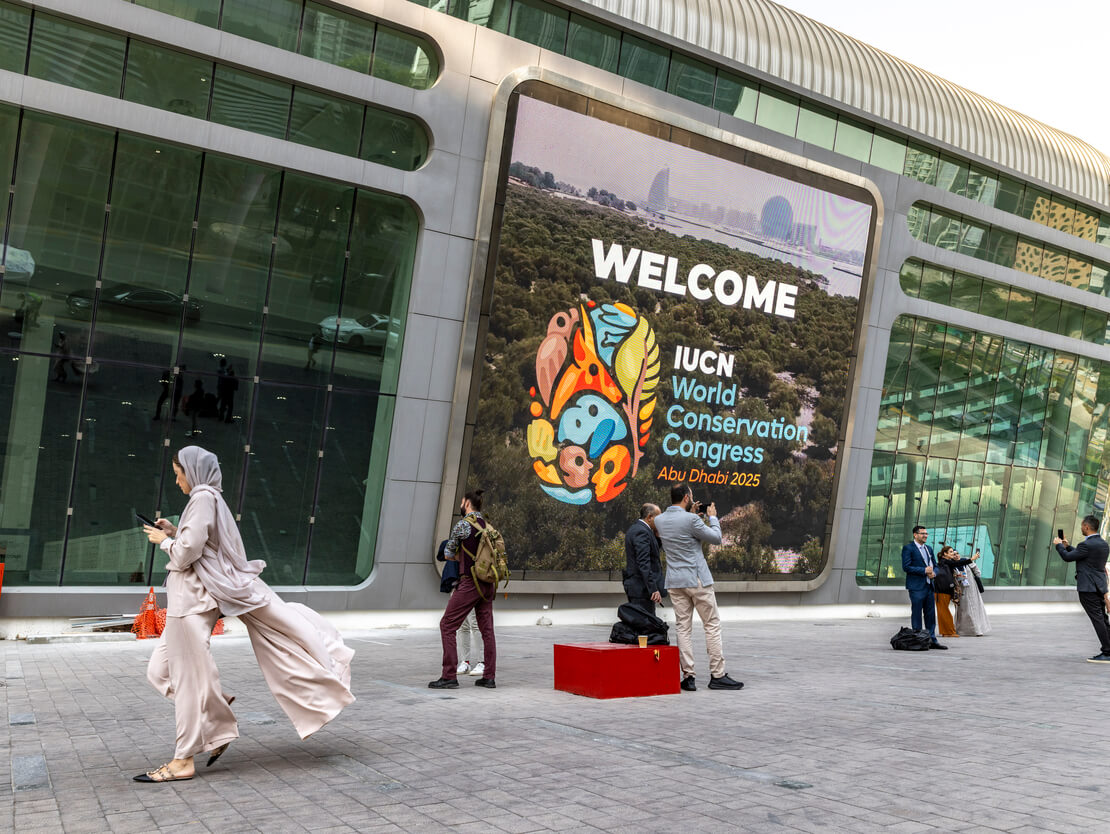IUCN agrees first global policy on synthetic biology


IUCN has adopted the first-ever global policy on synthetic biology and nature conservation.
The policy was adopted by IUCN’s highest decision-making body, its Members’ Assembly, comprising the Union’s Governmental, Non-Governmental, and Indigenous Peoples’ Organisations, at the IUCN World Conservation Congress in Abu Dhabi.
The policy covers synthetic biology in relation to nature conservation, whether applied for the purpose of conservation, or in other sectors such as industry, agriculture, or medicine, with potential direct or indirect impacts to nature.
“Synthetic biology technology is advancing, and in turn its potential implications for nature conservation are growing,” said Thomas Brooks, IUCN Chief Scientist. “This policy ensures IUCN is prepared, providing a guiding framework shaped by the perspectives of our Members through the most inclusive and participatory consultation process ever undertaken in IUCN, highlighting the role of our Union in convening and guiding difficult decisions.”
Because synthetic biology may carry both substantial benefits (e.g. to restore lost genetic diversity or to locally eradicate invasive alien species) and significant risks (e.g. unintended ecological cascades), the policy’s balanced posture is important: it allows innovation but insists on scrutiny. Because synthetic biology applications have implications for all sectors of society – in particular for Indigenous Peoples and local communities – the policy spells out in clear terms considerations for ensuring input into planning and decision-making, including through the principle of Free, Prior, and Informed Consent.
“This new IUCN Policy is important for three reasons,” said Maria Julia Oliva, Policy Development Working Group Co-Chair, IUCN World Commission on Environmental Law member and Director Policy and Sector Transformation with the Union of Ethical BioTrade. “It gives new hope for saving the many threatened species which face as-yet-unmanagable threats. It ensures that conservation uses of synthetic biology proceed with a precautionary approach, and it demands that other sectors incorporate nature conservation concerns into their applications of synthetic biology.”
The topic has long attracted debate, with a small proportion of the conservation community supportive of the application of synthetic biology for nature conservation, a small proportion opposed, and most conservationists until-now unsure or undecided on the subject. This balanced policy reflects IUCN’s unique position in finding common ground around polarised issues through convening the Union’s Membership and its independent expert Commissions.
“A crucial, starting input into the development of the policy was IUCN’s convening of its first-ever Citizens’ Assembly; an innovative mechanism to hear from a diverse sample of IUCN Members. The Citizens’ Assembly comprised representatives of 15 IUCN Members balanced across IUCN’s eight statutory regions, across governments and civil society, and across gender,” said Bibiana Sucre, IUCN Councillor and Executive Director of IUCN Member Provita from Venezuela. “The Citizens’ Assembly participants underwent an intensive training course and then spent a week in deliberations to produce 80 concise recommendations for the IUCN policy.”
IUCN-wide feedback from these recommendations, as well as webinars, solicitation of input from across the constituency, and targeted consultations with IUCN’s Regional Conservation Forums, Committees, Commissions, and Indigenous Peoples’ Organisation Members, provided the basis for the policy. It was drafted by a widely representative Policy Development Working Group appointed by Her Excellency IUCN President Razan Al Mubarak and underwent two rounds of peer review from across the Union, receiving more than 800 comments. The Convention on Biological Diversity engaged as observers to the process.
The policy should not be interpreted as supporting or opposing synthetic biology. It is not intended to replace ongoing and future efforts to address biodiversity loss. However, it could complement them. Crucially, it provides a framework for case-by-case decision-making, establishing a mechanism to guide how, when, and under what conditions synthetic biology applications might be approved and introduced.
“The new IUCN Policy encourages the provision of accessible capacity building on synthetic biology and nature conservation,” said Professor Zabta Shinwari, Policy Development Working Group Co-Chair, IUCN Species Survival Commission member and Vice-Chancellor of Federal Urdu University of Arts, Sciences & Technology. “This should include training and technical expertise to support engagement, understanding, policy making, implementation, monitoring, and impact assessments.”
With this adoption, IUCN calls on all its constituents to follow this policy, as well as inviting the Parties to the Convention on Biological Diversity, the Convention on International Trade in Endangered Species, and other multilateral environmental agreements to take it into account when considering synthetic biology and nature conservation. The policy follows the definition of synthetic biology adopted by the Convention on Biological Diversity, as: “A further development and new dimension of modern biotechnology that combines science, technology and engineering to facilitate and accelerate the understanding, design, redesign, manufacture and/or modification of genetic materials, living organisms and biological systems.”
Generous funding for the development of the IUCN policy on synthetic biology and nature conservation was provided by the Federal Ministry for the Environment, Nature Conservation, Nuclear Safety and Consumer Protection of the Government of Germany, and the Gordon and Betty Moore Foundation.
